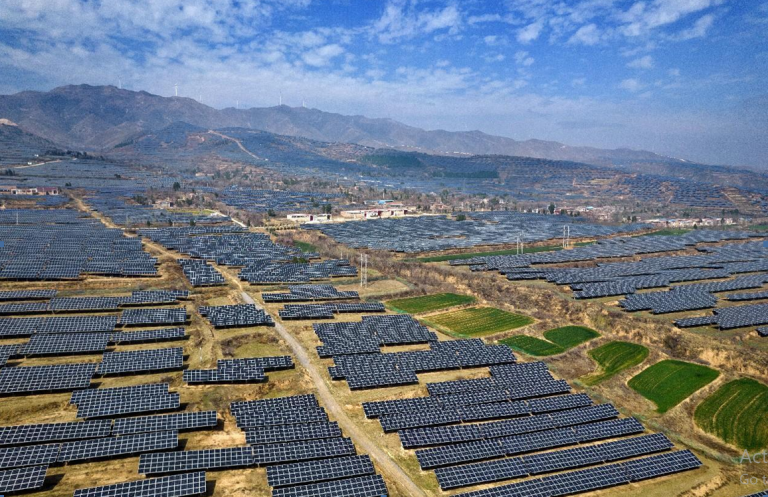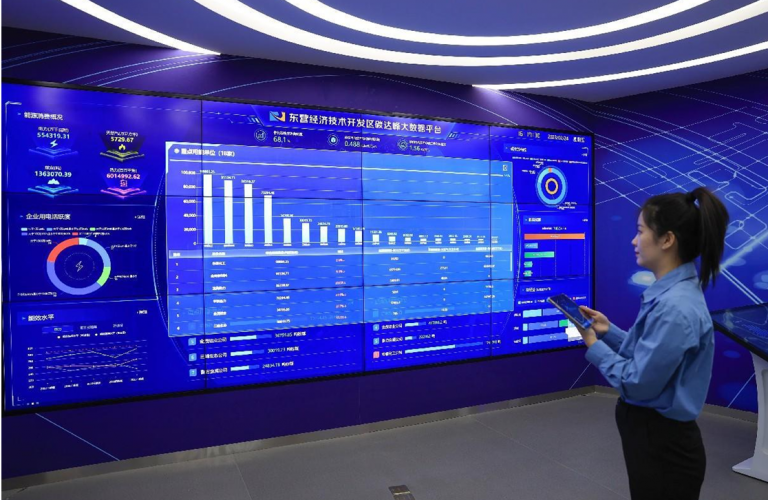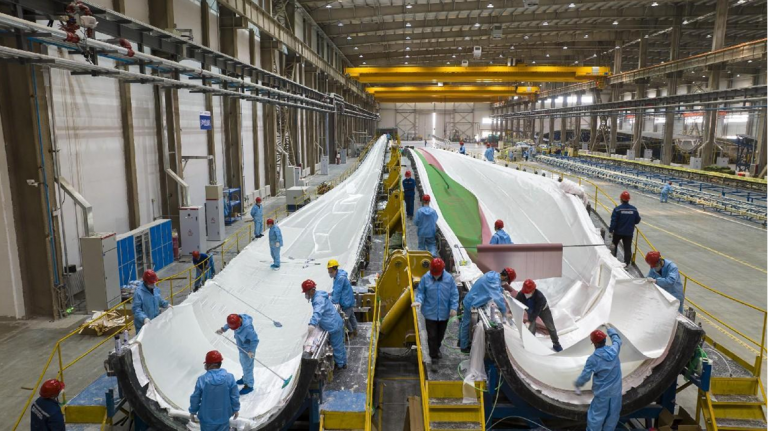
By Han Xin, People’s Daily
The manufacturing industry makes a major part of the Chinese economy. It is key to China’s green and low-carbon transition of production methods and industrial structure.
Today, green development is being extended from the production and supply chain to the infrastructure. Green factories and industrial parks are emerging across the country, recording China’s accelerated efforts to promote green manufacturing.
A smart production system enabled by big data and cloud computing technologies has been employed in a 5G intelligent workshop of Xin Feng Ming Group, a major chemical fiber producer in Tongxiang, east China’s Zhejiang province. In the workshop, a big screen displays the real-time energy consumption of production lines.
Adopting an innovative solution dyeing technique, the workshop can reduce 6 million tons of wastewater annually in the printing and dyeing process. It has also replaced wooden trays with recyclable plastic ones, which cuts the use of nearly 3 million wooden frames each year.
At the end processing link, the workshop employs an ultra-low-pressure vapor and condensate recycling technology, which helps cut solid waste by 95 percent and greenhouse gas emissions by 65 percent every year.
China has significantly improved its efficiency in energy and resource utilization. The energy consumption per unit of the added value of the country’s large industrial enterprises with annual revenues of more than 20 million yuan ($2.9 million) in 2021 dropped 5.6 percent from the previous year, after logging a 28-percent decline in the 2011-2015 period and a 16-percent decline in the 2016-2020 period. In 2021, the comprehensive utilization rate of massive solid waste has reached 56.8 percent, nearly 16 percentage points higher from 2012.
China’s green manufacturing has taken shape. Last year, it held a global market share above 80 percent for all manufacturing stages of the photovoltaic industry. Six Chinese enterprises were among the world’s top 10 wind turbine manufacturers and the country’s production and sales of new energy vehicles ranked first in the world for eight consecutive years.
China has basically established a green manufacturing system. So far, the country has nurtured 3,657 green factories, 270 green industrial parks, and 408 enterprises for green supply chains. Nearly 30,000 green products have been promoted in China.

It is estimated that over 95 percent of solid waste is recycled on average in the country’s green industrial parks, and a number of green factories boast energy consumption lower than the advanced level stipulated by national standards. A supply system for green products covering the whole industrial chain from raw materials to the consumption end is being built.
China has entered a new phase of development. It is greening its manufacturing industry in pursuit of a modern manufacturing model that features low consumption, low emissions, high efficiency and high benefit.
“Promoting green manufacturing is an inevitable choice for advancing new industrialization and a key to realizing high-quality development of the manufacturing sector,” said Liu Wenqiang, deputy head of the China Center for Information Industry Development.
“China still sees big room for improvement in green manufacturing compared with developed countries,” said Shan Zhongde, an academician with the Chinese Academy of Engineering.

At present, China’s industrial and energy structures are still high-carbon, with traditional resource-based industries making up a big proportion. The country will maintain rigid demand for energy and resources in the years to come, which puts it under high pressure of green and low-carbon transition. To cope with the situation and realize high-quality economic and social development, China must achieve high utilization of resources and focus on low-carbon and recyclable development, and push for the upgrading of production and lifestyles with green manufacturing.










